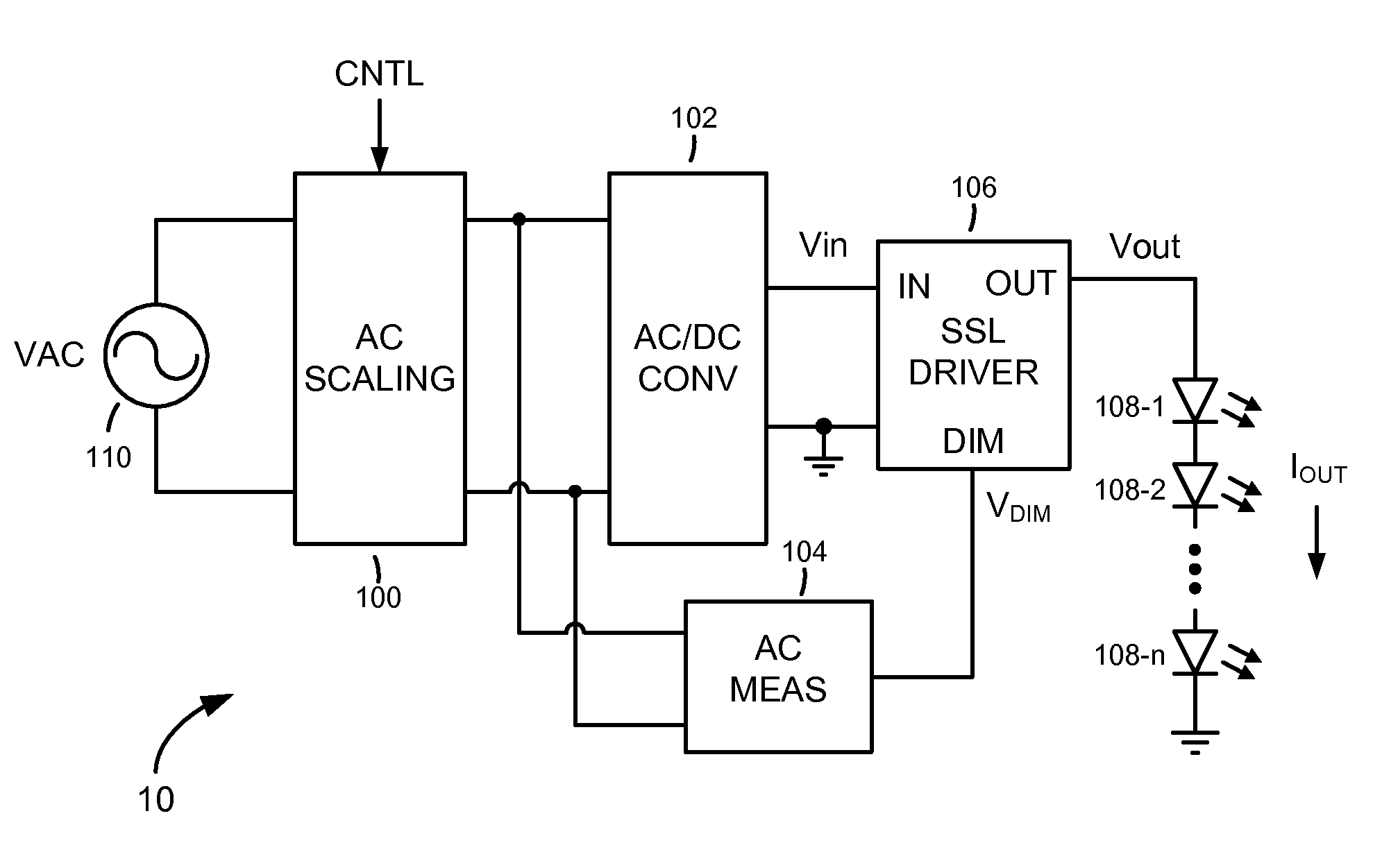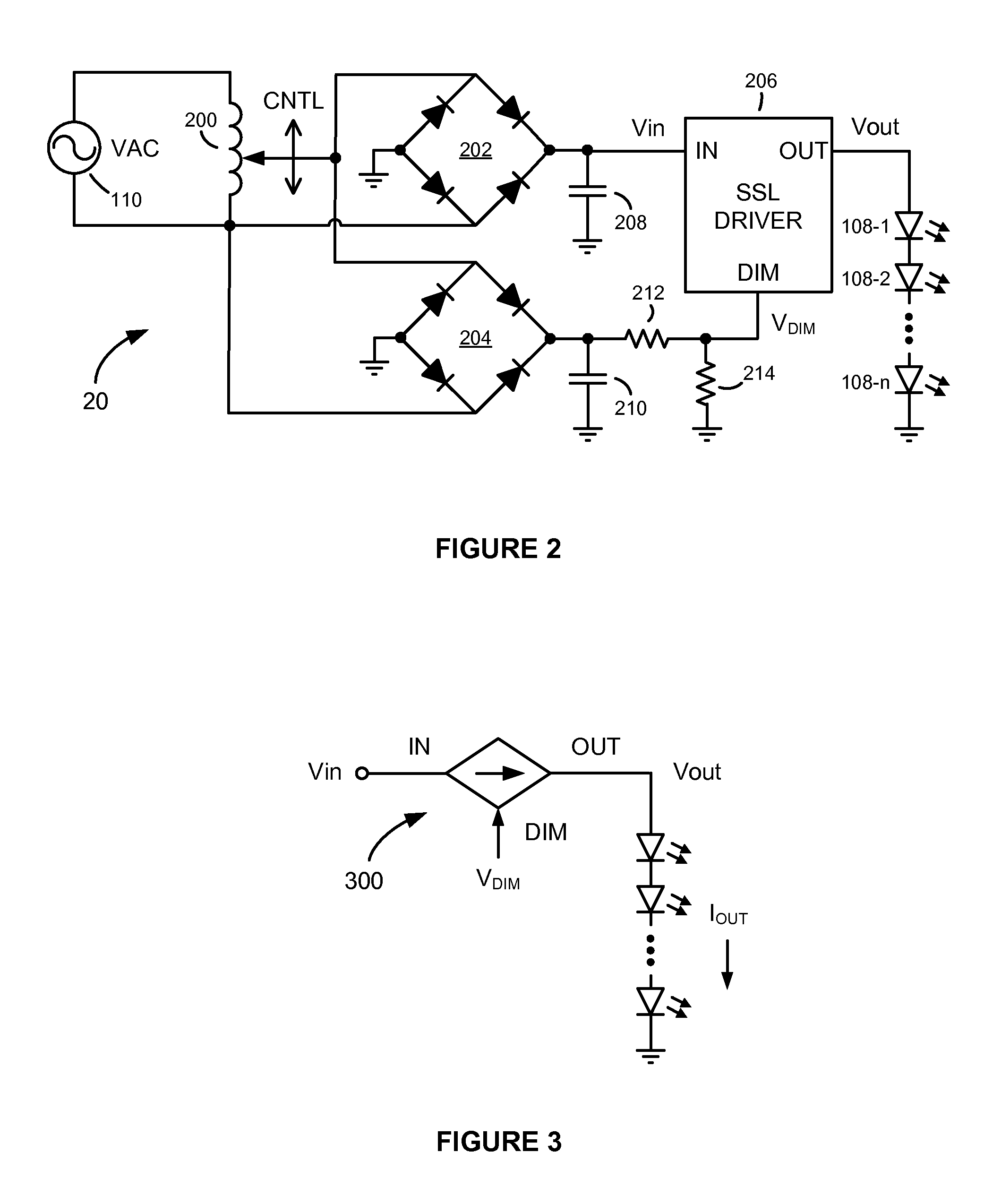Solid-State Lighting Dimming
a technology of solid-state lighting and dimming, which is applied in the direction of electric variable regulation, process and machine control, instruments, etc., can solve the problems of inability to directly control the dimming of ssl systems, inability to dim the light produced by, and inability to use analog dimmer switches commonly found in homes and offices to control dimming of conventional incandescent lighting sources. to achieve the effect of simple “current control” approach
- Summary
- Abstract
- Description
- Claims
- Application Information
AI Technical Summary
Benefits of technology
Problems solved by technology
Method used
Image
Examples
Embodiment Construction
[0020]Referring to FIG. 1, there is shown a solid-state lighting (SSL) system 10 with dimming capability, according to an embodiment of the present invention. The SSL system 10 comprises an alternating current (AC) scaling unit 100, an alternating current to direct current (AC / DC) converter 102, an AC measuring unit 104, an SSL driver 106, and one or more light-emitting devices (e.g., light-emitting diodes (LEDs)) 108-1, 108-2, . . . , 108-n. The AC scaling unit 100 is connected between an AC power source 110 (such as the AC mains, for example) and the AC / DC converter 102, and is configured to scale the AC input voltage VAC supplied by the AC power source 110 to a scaled voltage determined by a scaling control signal CNTL. The AC / DC converter 102 is connected between the AC scaling unit 100 and the SSL driver 106, and serves to convert the scaled AC voltage produced at the output of the AC scaling unit 100 to a DC voltage Vin, which is applied to the input IN of the SSL driver 106. ...
PUM
 Login to View More
Login to View More Abstract
Description
Claims
Application Information
 Login to View More
Login to View More - R&D
- Intellectual Property
- Life Sciences
- Materials
- Tech Scout
- Unparalleled Data Quality
- Higher Quality Content
- 60% Fewer Hallucinations
Browse by: Latest US Patents, China's latest patents, Technical Efficacy Thesaurus, Application Domain, Technology Topic, Popular Technical Reports.
© 2025 PatSnap. All rights reserved.Legal|Privacy policy|Modern Slavery Act Transparency Statement|Sitemap|About US| Contact US: help@patsnap.com



